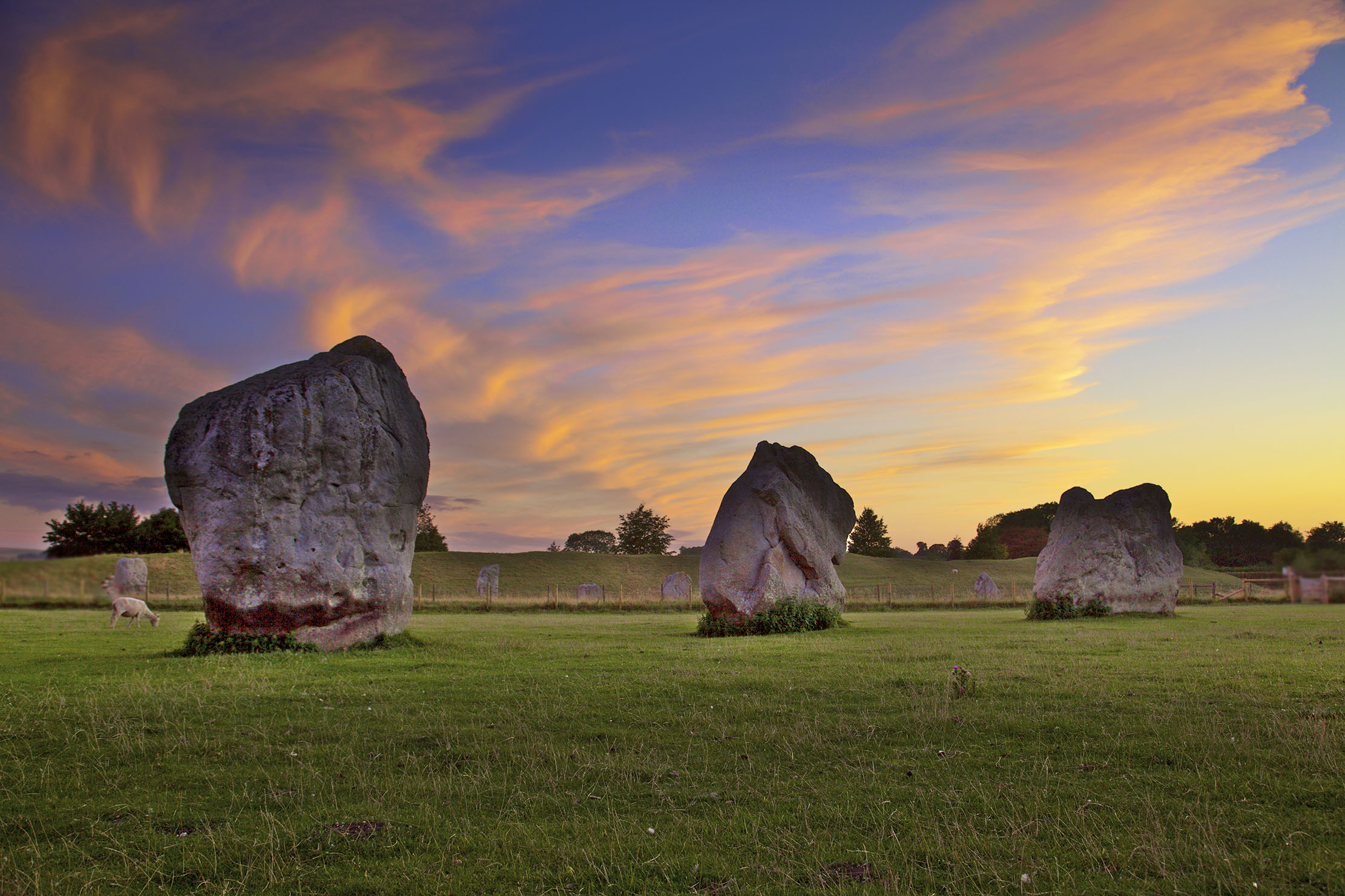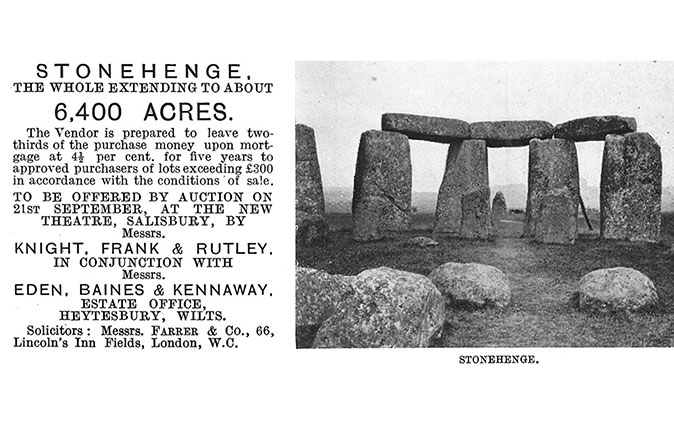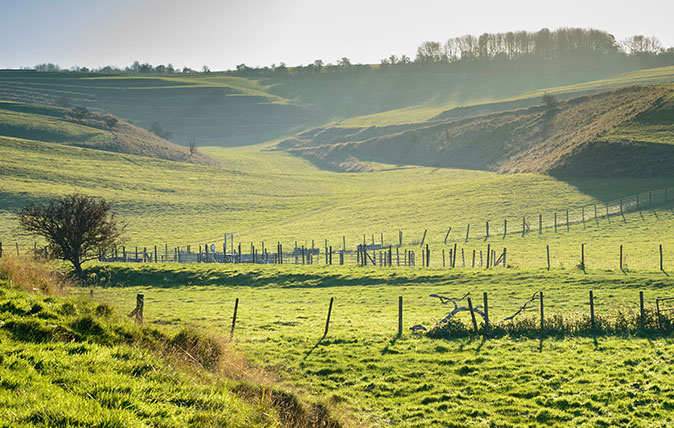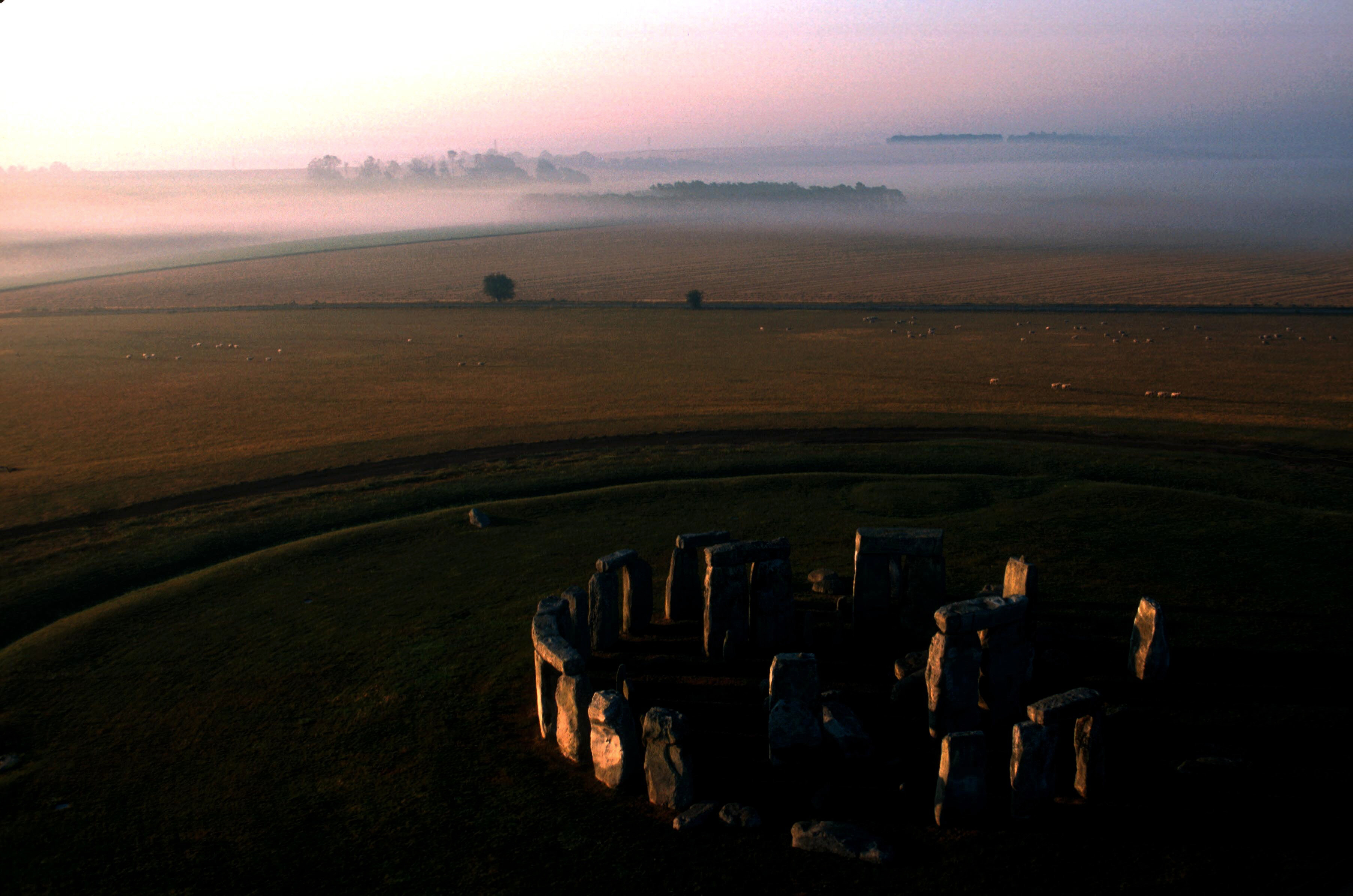Avebury stone circle in the time of Covid: 'It’s so quiet I have the stone circles almost to myself'
Fiona Reynolds takes a walk through the normally-busy Neolithic stone circle, discovering things not normally noticeable among the crowds of a World Heritage Site.


I’m standing in the heart of Avebury’s impressive henge, the three stone circles of which dominate this small Wiltshire village. It’s usually thronged with visitors walking among the stones, the National Trust cafe and car park full to bursting. Today, it’s Covid-quiet, eerily so, and bitterly, bitterly cold. But it’s that very quiet that enables me, walking alone, to see more clearly what has survived from its creation more than 5,000 years ago and to explore the landscape within which it sits, now a World Heritage Site.
I’ve plotted a route to immerse myself in the place, walking in a big circle from The Sanctuary on Overton Hill, past Silbury Hill and up the River Kennet to find the Long Stones west of Avebury Trusloe. Then up Windmill Hill, back to and through Avebury and up to join the Ridgeway National Trail to return to Overton Hill.
As soon as I leave the little car park, I sense the significance of ritual and ceremony in this landscape. All these places connect: The Sanctuary (concrete markers show where its stone and timber circles used to be) overlooks the Kennet Valley with its long barrows and the long stone Kennet Avenue into Avebury. Before I’ve walked a mile, Silbury Hill comes into view: a huge, perfectly shaped inverted bowl, more than 40 yards high. We still don’t know why it was built, but it’s evidently central to this mosaic of interconnected sites.
"I can just about strip away the ephemera of centuries and see the flinty downland, studded with stones and monuments, that formed this ritual landscape"
My path approaches it from the east, skirts it, then follows the full, bubbling River Kennet towards Avebury. When it reaches the road, I turn towards Avebury Trusloe, where I pick up South Street, on the line of Beckhampton Avenue, the ceremonial stone avenue leading west from Avebury. At its end are two huge, standing stones, known as Adam and Eve, the last remnants of Longstones Cove. After admiring the pair, I turn north and walk straight up a long, chalky road to Windmill Hill, a prominent high point and the site of a Neolithic causewayed enclosure. It’s made up of three concentric ditches (although, hard as I look, I can only discern two) and studded with tumuli, grazed by a flock of deeply uninterested sheep. Yet excavations here have found evidence of mass cattle and sheep slaughter: perhaps it was a festival or market site?
Although it’s blowy and freezing, the sun is out and I get a tremendous view from the top. If I narrow my eyes, I can just about strip away the ephemera of centuries and see the flinty downland, studded with stones and monuments, that formed this ritual landscape. Inspired, I all but waltz down the hill to reach the flooded valley bottom and Avebury village. It’s so quiet I have the stone circles almost to myself as I walk around the southern cluster and climb the ditch. A red kite wheels up in front of me, its huge wings outstretched. It takes me by surprise, but, surely, it’s a bird the Neolithic makers of this landscape would have known.
The last leg of my walk is a long slog up the Herepath, in the teeth of an icy wind and snow flurries, towards the Ridgeway. When I reach it, I turn south, gratefully, and, sheltered from the wind, I take the chalky trail back to Overton Hill, warmth and home.
Later, I call an archaeologist friend to describe my walk. ‘Oh,’ he says, ‘you’ve walked round Stukeley’s dragon!’ And so I have; on looking it up, I see how William Stukeley, the 18th-century antiquarian, drew this place. The dragon’s head is The Sanctuary, its belly Avebury, its neck Kennet Avenue and its tail Beckhampton Avenue. Quite by chance, I have followed the dragon in my rediscovery of this extraordinary landscape.
Sign up for the Country Life Newsletter
Exquisite houses, the beauty of Nature, and how to get the most from your life, straight to your inbox.

Credit: ©Country Life Picture Library
The day that Stonehenge was sold via the pages of Country Life
Stonehenge is shortly to be changed forever, with the planned tunnel getting the go-ahead. But it's not the first time

Helen Browning’s Royal Oak: An idyllic Wiltshire spot with pigs, pies, pints and pillows
Helen Browning's organic food empire stretches to a farm, restaurant and a lovely country pub with beautifully-done rooms. Country Life

Jason Goodwin: 'What gets lost will be forever lost, whereas pylons, cars and trains may be rendered obsolete'
Jason Goodwin muses on economics, Stonehenge and social media.
Fiona Reynolds is chair of the Food, Farming and Countryside Commission, the former director-general of the National Trust, former Master of Emmanuel College, Cambridge, and the author of The Fight for Beauty. Follow her on Twitter @fionacreynolds.
-
 Some of the finest landscapes in the North of England with a 12-bedroom home attached
Some of the finest landscapes in the North of England with a 12-bedroom home attachedUpper House in Derbyshire shows why the Kinder landscape was worth fighting for.
By James Fisher
-
 John Sutcliffe — The man, the myth and the paint-naming legend behind Dead Salmon and Elephant's Breath
John Sutcliffe — The man, the myth and the paint-naming legend behind Dead Salmon and Elephant's BreathBy Carla Passino